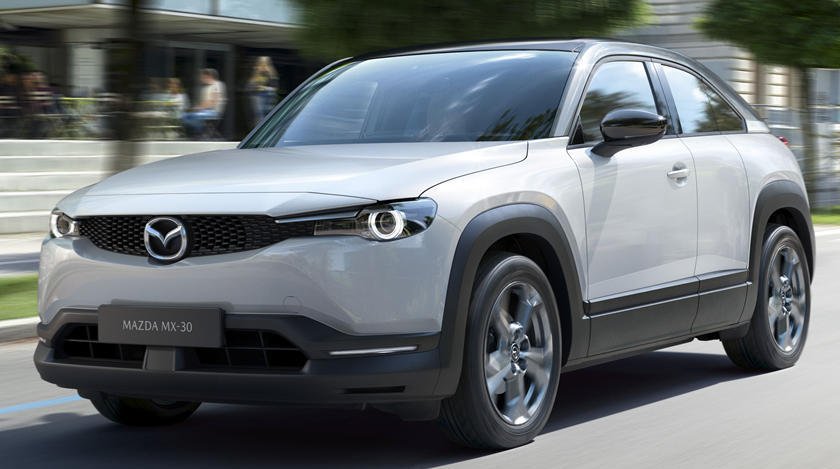When it comes to batteries in electric vehicles, bigger tends (or at least trends) to be better. But in rolling out its first production EV, Mazda opted for a 35.5-kWh lithium-ion battery pack that's much smaller than the units some of its competitors have employed. And that's just the way it wanted it.
Speaking with Automotive News Europe, Mazda's European R&D chief Christian Schultze explained that, instead of going for groundbreaking range, the Japanese automaker prioritized minimizing the overall carbon footprint of the new Mazda MX-30 – including, most crucially, the life-cycle of its battery pack.
Schultze explains that Mazda took into account the energy required to build, charge, and eventually replace the MX-30's battery pack, and arrived at a 35.5-kWh unit that would have no more environmental impact than a diesel Mazda3 – which kind of puts into perspective the hysteria over diesel emissions and the touted benefits of electric vehicles.
The MX-30's 35.5-kWh battery has barely more than a third the capacity of the 100-kWh pack in the top Tesla Model S. It's little more than half the capacity of the batteries in the Chevy Bolt (60 kWh), the top-spec Nissan Leaf (62 kWh), or the Hyundai Kona, Kia Soul and Niro EVs (64 kWh)
It's also less than the BMW i3 (42.2 kWh), and outguns only the Fiat 500e (24 kWh), Honda Clarity (25.5 kWh), and Hyundai Ioniq (28 kWh).
As a result, of course, the Mazda MX-30 boasts only 124 miles of range – and that's on the highly optimistic WLTP standard. But Mazda says that the European customers it's targeting with the electric crossover only travel about 31 miles every day. If and when it intends to sell the MX-30 in America, though, it'll either need a much bigger battery, or a range extender like the anticipated return of the Wankel rotary engine.
Related News



